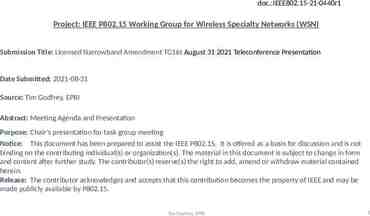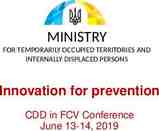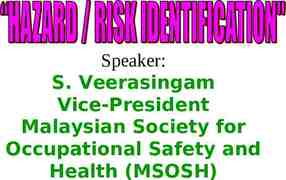Correlates of Resilience in Adults with Spina Bifida Amy Showen,
15 Slides6.62 MB
Correlates of Resilience in Adults with Spina Bifida Amy Showen, MD MSc Isabel Allen, PhD Hillary Copp, MD MS Lindsay Hampson, MD MAS University of California, San Francisco The Societies for Pediatric Urology Annual Meeting 2020
SPINA BIFIDA Over 75% of individuals with spina bifida live into adulthood Lifelong physical and psychosocial challenges – Hydrocephalus, bladder dysfunction, mobility – Depression, anxiety, social isolation – Quality of life
RESILIENCE The process of positive adaptation in the face of adversity Associated with improved outcomes – Quality of life – Psychological well-being (depression, anxiety) – Health-related behaviors (adherence) Modifiable – Cognitive behavioral therapy, mindfulness
OBJECTIVES (1) Measure resilience in adults with spina bifida (2) Identify associated demographic and clinical factors
METHODS Anonymous survey via Facebook advertising Inclusion criteria: age 18 years, diagnosis of spina bifida, complete data – N 195 Independent variables: age, gender, race, household education, insurance, urologic surgeries, VP shunt, physical function Dependent variable: resilience – Connor Davidson Resilience Scale Analysis: multiple linear regression – Backward elimination approach
RESULTS: RESILIENCE Resilience in our study population is moderately poor, relative to a US general population sample (p 0.001)
RESULTS: RESILIENCE Multiple sclerosis - Koelmel et al., 2017 Muscular dystrophy - Terrill et al., 2016 Acquired spinal cord injury - Kilic et al., 2013 US general population - Campbell-Sills et al., 2009 20 25 Mean Resilience Score (CD-RISC 10), with 95% Confidence Interval 30 35
RESULTS: RESILIENCE Multiple sclerosis - Koelmel et al., 2017 Muscular dystrophy - Terrill et al., 2016 Acquired spinal cord injury - Kilic et al., 2013 US general population - Campbell-Sills et al., 2009 20 25 Mean Resilience Score (CD-RISC 10), with 95% Confidence Interval 30 35
RESULTS: RESILIENCE Multiple sclerosis - Koelmel et al., 2017 Muscular dystrophy - Terrill et al., 2016 Acquired spinal cord injury - Kilic et al., 2013 US general population - Campbell-Sills et al., 2009 20 25 Mean Resilience Score (CD-RISC 10), with 95% Confidence Interval 30 35
RESULTS: RESILIENCE Multiple sclerosis - Koelmel et al., 2017 Muscular dystrophy - Terrill et al., 2016 Acquired spinal cord injury - Kilic et al., 2013 US general population - Campbell-Sills et al., 2009 20 25 Mean Resilience Score (CD-RISC 10), with 95% Confidence Interval 30 35
RESULTS: CORRELATES OF RESILIENCE
RESULTS: CORRELATES OF RESILIENCE
CONCLUSIONS Resilience is moderately poor in adults with spina bifida Older age, higher household education, prior urologic surgeries, and greater physical function are associated with resilience As a modifiable construct with positive effects on quality of life, psychological well-being, and healthrelated behaviors, resilience is a promising target for intervention in this population
REFERENCES Bellin MH, Dosa N, Zabel TA, Aparicio E, Dicianno BE, Osteen P. Self-Management, Satisfaction With Family Functioning, and the Course of Psychological Symptoms in Emerging Adults With Spina Bifida. J Pediatr Psychol. 2013;38(1):50-62. doi:10.1093/jpepsy/jss095 Bellin MH, Zabel TA, Dicianno BE, et al. Correlates of Depressive and Anxiety Symptoms in Young Adults with Spina Bifida. J Pediatr Psychol. 2010;35(7):778-789. doi:10.1093/jpepsy/jsp094 Blum RW, Resnick MD, Nelson R, St Germaine A. Family and Peer Issues Among Adolescents With Spina Bifida and Cerebral Palsy. Pediatrics. 1991;88(2):280-285. Bowman RM, McLone DG, Grant JA, Tomita T, Ito JA. Spina Bifida Outcome: A 25-Year Prospective. Pediatr Neurosurg. 2001;34(3):114-120. doi:10.1159/000056005 Campbell-Sills L, Forde DR, Stein MB. Demographic and childhood environmental predictors of resilience in a community sample. J Psychiatr Res. 2009;43(12):1007-1012. doi:10.1016/j.jpsychires.2009.01.013 Campbell-Sills L, Stein MB. Psychometric analysis and refinement of the connor–davidson resilience scale (CD-RISC): Validation of a 10-item measure of resilience. J Trauma Stress. 2007;20(6):1019-1028. doi:10.1002/jts.20271 Christensen ME. Resilience and health outcomes in patients with traumatic injury. August 2011. https://digital.library.unt.edu/ark:/67531/metadc84187/m2/1/high res d/thesis.pdf. Connor KM, Davidson JRT. Development of a new resilience scale: The Connor-Davidson Resilience Scale (CD-RISC). Depress Anxiety. 2003;18(2):76-82. doi:10.1002/da.10113 Davidson J. Connor-Davidson Resilience Scale (CD-RISC) Manual. Unpublished; 2018. www.cd-risc.com. Dicianno BE, Gaines A, Collins DM, Lee S. Mobility, Assistive Technology Use, and Social Integration Among Adults with Spina Bifida: Am J Phys Med Rehabil. 2009;88(7):533-541. doi:10.1097/PHM.0b013e3181aa41d4 Dray J, Bowman J, Campbell E, et al. Systematic Review of Universal Resilience-Focused Interventions Targeting Child and Adolescent Mental Health in the School Setting. J Am Acad Child Adolesc Psychiatry. 2017;56(10):813-824. doi:10.1016/j.jaac.2017.07.780 Joyce S, Shand F, Tighe J, Laurent SJ, Bryant RA, Harvey SB. Road to resilience: a systematic review and meta-analysis of resilience training programmes and interventions. BMJ Open. 2018;8(6):e017858. doi:10.1136/bmjopen-2017-017858 Kalfoss MH, Merkens MJ. A comparative study of quality of life among adults with spina bifida. Cerebrospinal Fluid Res. 2006;3(S1):S31. doi:10.1186/1743-8454-3-S1-S31 Kilic SA, Dorstyn DS, Guiver NG. Examining factors that contribute to the process of resilience following spinal cord injury. Spinal Cord. 2013;51(7):553-557. doi:10.1038/sc.2013.25 Kim GM, Lim JY, Kim EJ, Park S. Resilience of patients with chronic diseases: A systematic review. Health Soc Care Community. 2019;27(4):797-807. doi:10.1111/hsc.12620 Koelmel E, Hughes AJ, Alschuler KN, Ehde DM. Resilience Mediates the Longitudinal Relationships Between Social Support and Mental Health Outcomes in Multiple Sclerosis. Arch Phys Med Rehabil. 2017;98(6):1139-1148. doi:10.1016/j.apmr.2016.09.127 Matzka M, Mayer H, Köck-Hódi S, et al. Relationship between Resilience, Psychological Distress and Physical Activity in Cancer Patients: A Cross-Sectional Observation Study. Maulik PK, ed. PLOS ONE. 2016;11(4):e0154496. doi:10.1371/journal.pone.0154496 Pruitt LJ. Living With Spina Bifida: A Historical Perspective. Pediatrics. 2012;130(2):181-183. doi:10.1542/peds.2011-2935 Ristevska-Dimitrоvska G, Filov I, Rajchanovska D, Stefanovski P, Dejanova B. Resilience and Quality of Life in Breast Cancer Patients. Open Access Maced J Med Sci. 2015;3(1):727. doi:10.3889/oamjms.2015.128 Sawin KJ, Bellin MH. Quality of life in individuals with spina bifida: A research update. Dev Disabil Res Rev. 2010;16(1):47-59. doi:10.1002/ddrr.96 Terrill AL, Molton IR, Ehde DM, et al. Resilience, age, and perceived symptoms in persons with long-term physical disabilities. J Health Psychol. 2016;21(5):640-649. doi:10.1177/1359105314532973 Toprak D, Nay L, McNamara S, Rosenberg AR, Rosenfeld M, Yi‐Frazier JP. Resilience in adolescents and young adults with cystic fibrosis: A pilot feasibility study of the promoting resilience in stress management intervention. Pediatr Pulmonol. 2020;55(3):638-645. doi:10.1002/ppul.24574 Zolkoski SM, Bullock LM. Resilience in children and youth: A review. Child Youth Serv Rev. 2012;34(12):2295-2303. doi:10.1016/j.childyouth.2012.08.009
THANK YOU AND STAY SAFE Please feel free to email with comments or questions. [email protected]




















